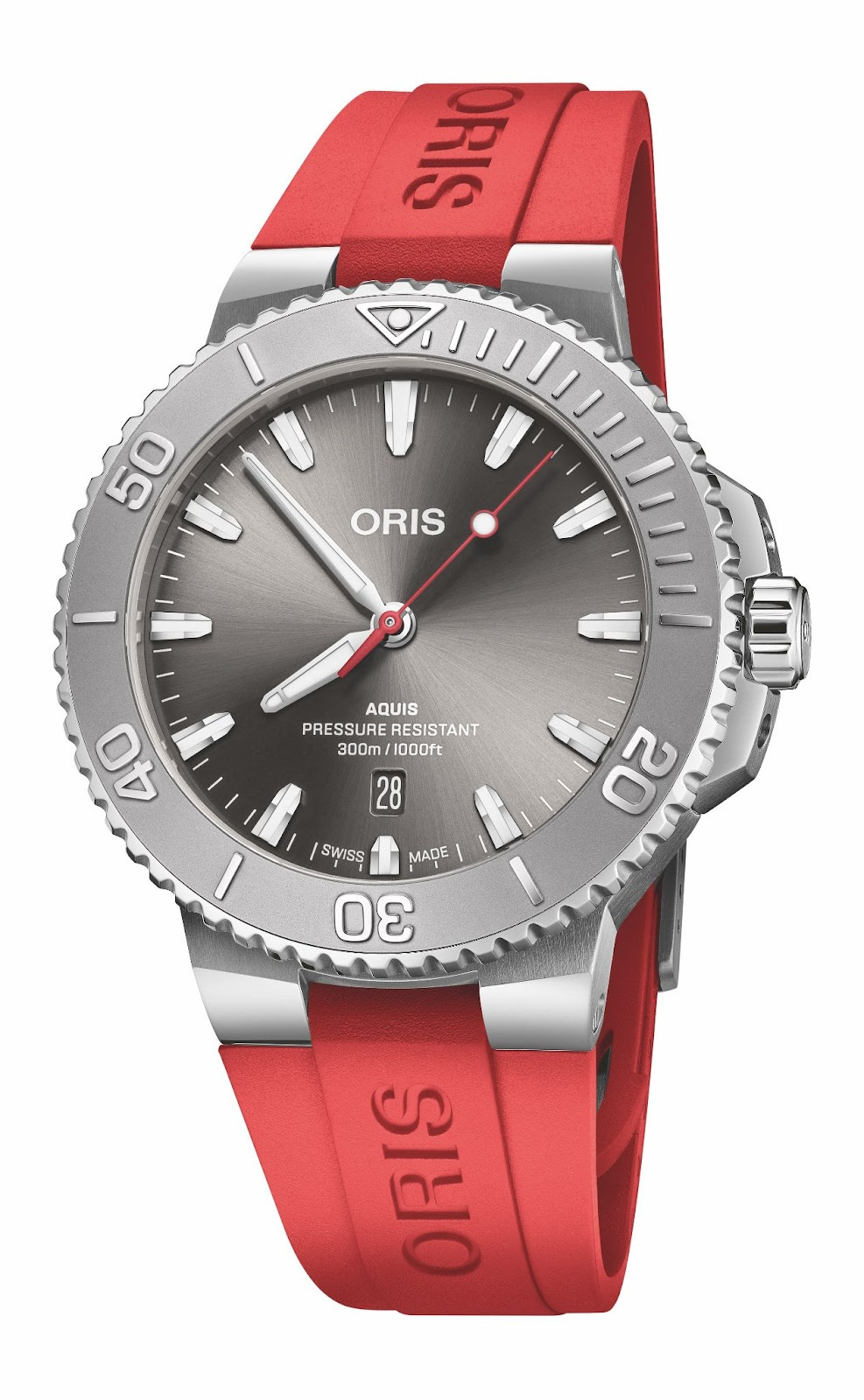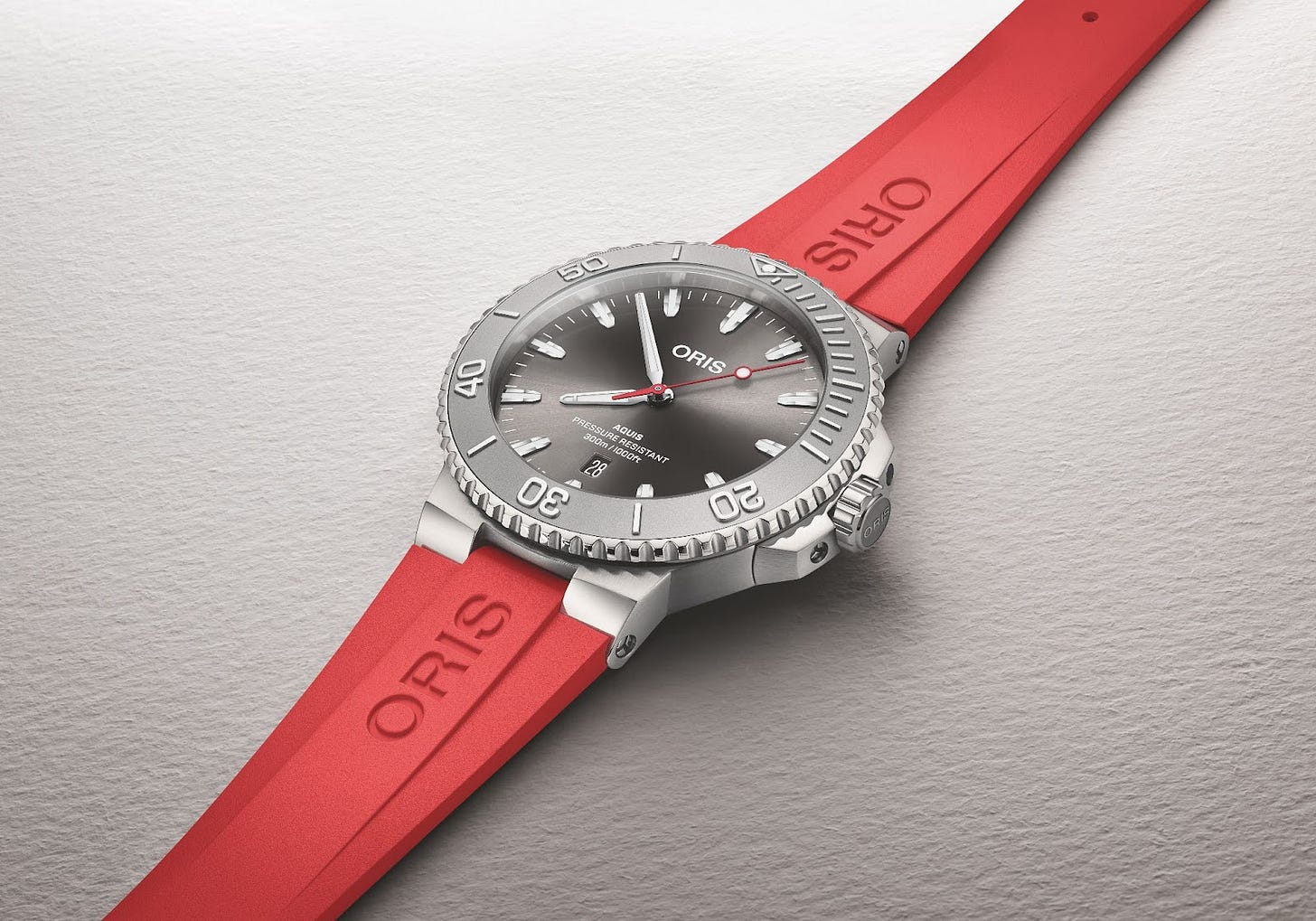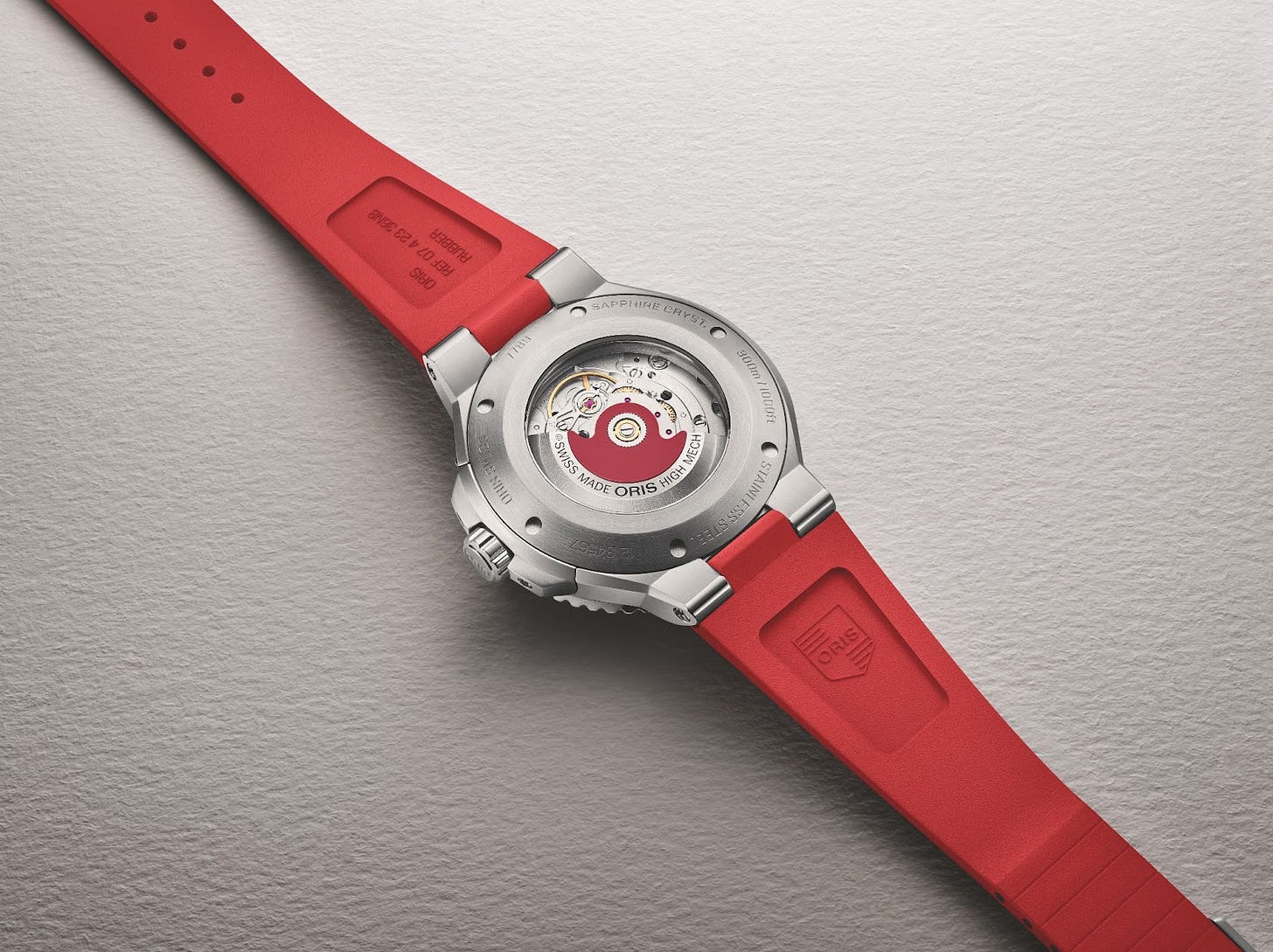There's something grimly perverse about launching a dive watch in an era when the oceans are dying. Oris, that sturdy Swiss manufacturer with the commendable habit of partnering with marine conservation groups, has chosen this particular moment—June 17, 2025—to reintroduce their Aquis Date Relief, a timepiece designed for underwater adventures most of us will experience only through Netflix documentaries. The timing feels both prophetic and absurd, like selling snow boots during a heatwave.
The Cultural Moment: Watching While Rome Burns
The contemporary luxury landscape has developed a curious relationship with environmental consciousness. We have entered an age where purchasing power masquerades as planetary stewardship, where the very act of consuming becomes a form of activism. The Aquis Date Relief emerges into this zeitgeist perfectly positioned—a tool watch for an audience that increasingly treats conservation as a lifestyle brand rather than an existential imperative.
Consider the cultural mathematics at play: a 43.5mm steel monument to mechanical precision, water-resistant to depths where coral reefs once thrived, marketed to urbanites whose deepest aquatic encounters involve hotel infinity pools. The relief bezel—that three-dimensional manufacturing complexity that distinguishes this model—becomes a topographical map of our contradictions. Each raised minute marker stands as testament to human ingenuity applied to increasingly theoretical pursuits.
Strategic Positioning: The Boutique Dive Bar
Oris has positioned this release with the calculated precision of a Swiss movement. At CHF 2,100 for the rubber strap variant, the Relief sits in that sweet spot between accessible luxury and serious collector consideration—expensive enough to feel consequential, democratic enough to avoid Rolex waiting lists. It's a dive watch populism for the Patagonia vest demographic.
The stainless steel relief bezel represents a fascinating strategic gambit. While competitors chase ceramic perfection and titanium weightlessness, Oris doubles down on old-school industrial romance. The complex manufacturing process behind the relief scale isn't just technical showmanship—it is a deliberate rejection of contemporary smoothness, a textural rebellion against the iPhone-ification of luxury goods. That this complicates production while limiting durability compared to ceramic alternatives becomes, in Oris's hands, a mark of artisanal authenticity.
Heritage as Performance Art
The "return" of the Aquis Date Relief carries the weight of manufactured nostalgia. Following the "successful relaunch of the evergreen Aquis Date," this resurrection feels less like brand evolution than brand archaeology—digging up past successes to validate present uncertainties. The original Relief wasn't exactly a landmark of horological innovation; its revival suggests an industry increasingly comfortable mining its own recent past for inspiration.
Yet there's something charming about this temporal myopia. In an era of constant disruption, the mere act of bringing back a five-year-old design feels radically conservative. The Relief's heritage exists not in decades of tradition but in the recent memory of better times—before supply chain chaos, before smartwatch ubiquity, before luxury became quite so performatively conscious.
Technical Theatre and Mechanical Romanticism
The Oris 733 movement beats within this steel shell like a mechanical heart transplant—Swiss Made reliability packaged in industrial poetry. The 41-hour power reserve offers just enough autonomy for a Friday-to-Monday neglect—practical for the desk-bound professional who removes their watch for weekend leisure; the 300-meter water resistance promises adventures that remain largely theoretical. This disconnect between capability and application has become luxury watchmaking's defining paradox: the more capable these instruments become, the less they're actually used for their intended purposes.
The relief bezel's three-dimensional complexity serves as both functional element and philosophical statement. In an industry increasingly dominated by smooth, perfect surfaces, those raised minute markers represent texture as rebellion. They catch light differently, accumulate patina uniquely, and require more careful manufacturing—imperfections that separate serious collectors from casual consumers. That they're potentially less durable than ceramic alternatives becomes a feature, not a bug: forced obsolescence as luxury signifier.
The Economics of Environmental Theater
The Aquis Date Relief's availability strategy—June 2025, with typical Oris distribution—ensures sufficient rarity without artificial scarcity. It's democratic exclusivity: obtainable enough to build community, limited enough to maintain desirability. The secondary market implications remain modest; this isn't Rolex speculation but sustainable luxury consumption.
The bright red rubber strap option deserves particular attention—a color choice that transforms the piece from serious tool to playful statement. It's Oris acknowledging that most buyers will never need the watch's dive capabilities, offering instead a design element that photographs well for social media. The red becomes permission to treat the piece as fashion rather than function.
The Bigger Picture: Conservation Through Consumption
What the Aquis Date Relief signals about luxury's future is both encouraging and troubling. The industry has learned to monetize environmental anxiety, transforming conservation into consumption opportunity. The relief bezel becomes a topographical metaphor—raised surfaces mapping the complex terrain between planetary concern and personal desire.
Perhaps that's the most honest thing about this release: its frank acknowledgment that modern dive watches serve primarily as totems rather than tools. The Relief doesn't pretend to save the oceans; it simply offers a mechanically interesting way to think about them while checking the time. In our current moment, that mixture of utility and futility feels exactly right—a luxury object for an age when luxury itself has become morally complicated.
The paradox resolves not through righteousness but through recognition: we are what we are, and sometimes the most honest response to an environmental crisis is a beautifully made watch we will never use for its intended purpose.
About the Author
Sergio Galanti is a journalist specializing in independent watchmaking and mechanical horology.






